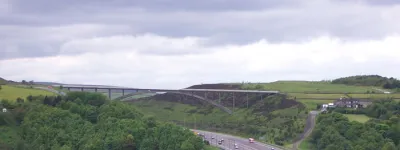Motorways are used by huge volumes of long-distance traffic, and on any particular part of the road there will be thousands of drivers who are completely unfamiliar with the area they are passing through. That's fine most of the time (in fact, it's exactly what motorways are supposed to do) — but what happens when the motorway is suddenly closed?
Emergency Diversion Routes exist for that very reason: with no knowledge of the local area, a motorist can find their way back on to the motorway at the next junction. They are ready to use almost straight away, and across the country, there's a diversion route to allow for the closure of absolutely any stretch of motorway.
The existence of Emergency Diversion Routes also answers the common question: what's the point of those unexplained symbols stuck on to road signs?
What are these strange symbols?
Emergency Diversion Routes are signposted using black symbols on a yellow patch.
There are four shapes — square, triangle, circle and diamond — but each can be shown filled or in outline, making eight distinct symbols. Close to motorway junctions, and on roads near to or following the line of a motorway, they are commonly placed on direction signs, either manufactured as part of the sign or added later on a vinyl patch.
How does a diversion work?
Each diversion route will lead traffic to the next motorway junction, where it can rejoin the motorway. Many re-entry points have another folding sign, as the last one in the chain, which will show the way to re-join the motorway in its normal state. These final signs can be uncovered, like trigger signs, to indicate that traffic should follow the next EDR symbol to a later motorway junction, in case the motorway isn't open at that point. In this way Emergency Diversion Routes can be daisy-chained together to form longer diversions if the motorway is closed for more than one junction.
When will I see them?
If the motorway is open, you won't see very much at all. In normal circumstances, the Emergency Diversion Routes will appear as:
